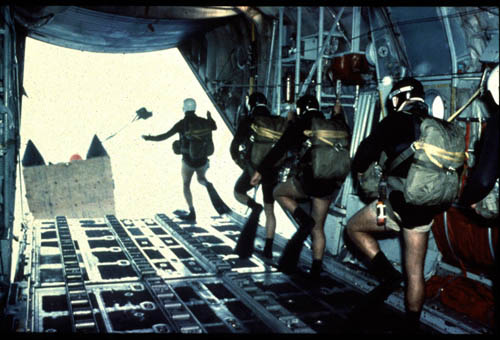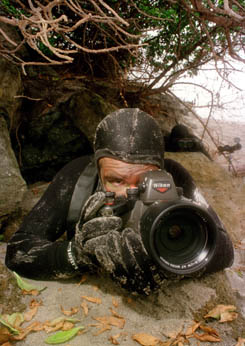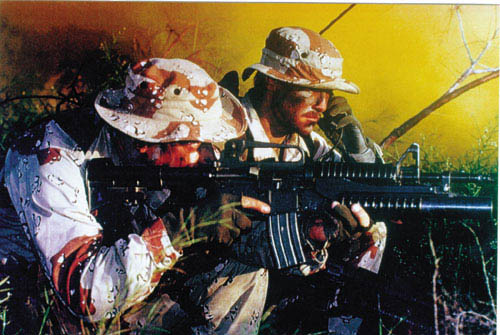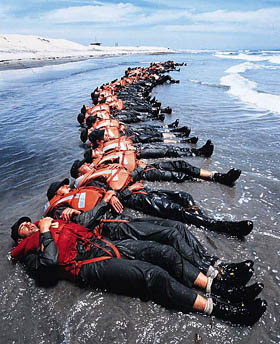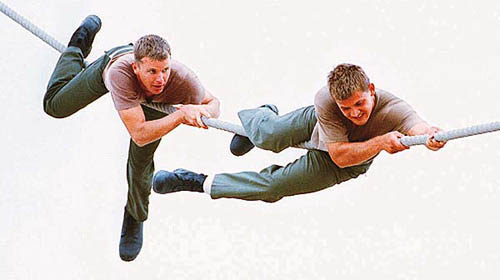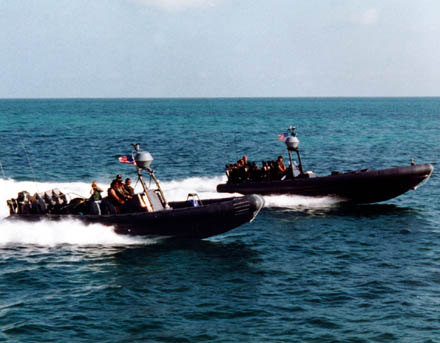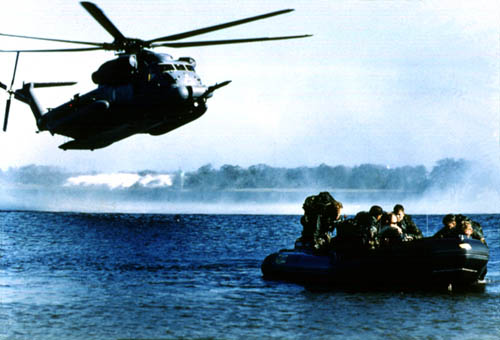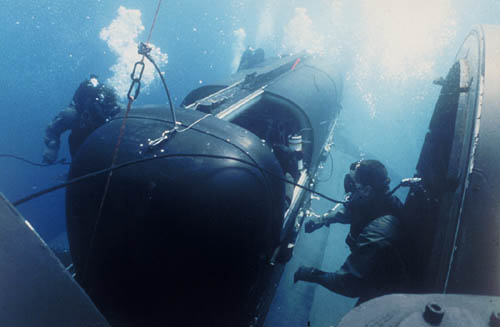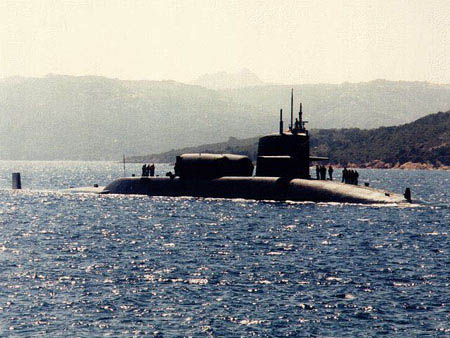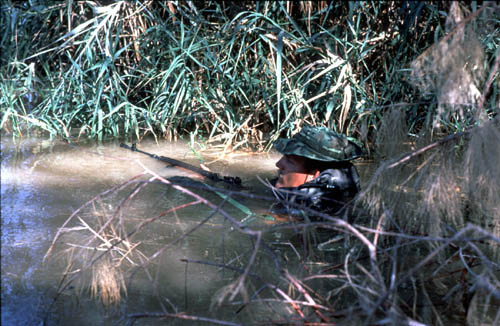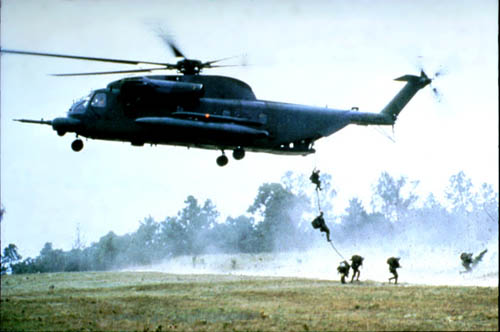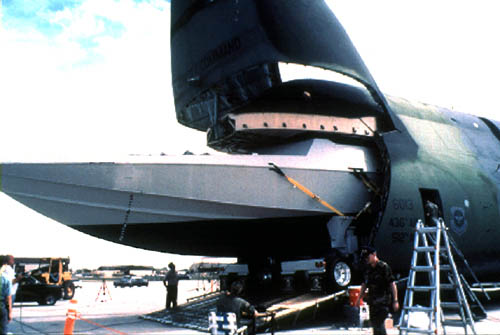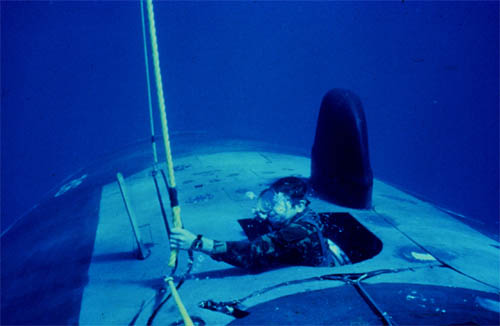|
|
||||||
|
Introduction
SEALS are the US Navy maritime special operations forces. This small community of about 2000 highly trained warriors perform a variety of missions including:
Navy medical personnel can come in contact with SEALS who are attached to Amphibious Ready Groups or Carrier Battle Groups, or when they present to MTFs or Fleet Hospitals for care or support. The last few years of publications, movies, and documentaries about SEALS have ensured that most people know who they are and what they do. However, those outside the Naval Special Warfare community are usually unaware of the kind of medical training and capabilities that SEAL platoons have. Understanding SEAL medical doctrine and training will help Navy physicians provide better support to NSW assets. SEAL Corpsmen The most important fact to understand about SEAL corpsmen is that medical care is not their primary job.
During the Viet Nam War, when SEAL platoons deployed, they took a non-SEAL Navy corpsman with him. As the SEAL mission evolved, becoming more complex and requiring highly technical skills, all members of the SEAL platoon needed the same level of training. Just as a 14 man SEAL platoon can only carry so much equipment on their backs and must decide what is most important to take, SEAL corpsman are trained in the most critical trauma skills to support their platoon, and often do not have the same medical knowledge base that their fleet peers do. Training The training pipeline for SEAL corpsman has changed frequently over the last decades. As a result, there is an enormous variation in the medical experience and knowledge they have. The current pipeline begins on Coronado Island in San Diego California, at Basic Underwater Demolition/SEAL School, or BUD/S. This six month course is the most physically and mentally challenging military training in the world. Many references and televisions shows document the experience. It is the segment of SEAL training which has changed the least over the last 50 years. Survivors of this training still have a long way to go before they achieve designation as a SEAL. Upon graduation they leave Coronado for US Army Airborne School at Ft. Bragg, North Carolina. After three weeks obtaining their jump wings, the pathway for corpsmen currently differs from other rates.
Successful completion of STT allows students to sit before a Trident Board to demonstrate attainment of basic SEAL skills. Candidates who are recommended by the Trident Board are designated as SEALS and are assigned to their first platoon. Corpsmen are given the additional Combat Medic NEC, 8492. Skills This training pathway (Army SOCM course and EMT-P certification) provides a high level of trauma management competence throughout the SEAL forces. However, that emphasis necessarily limits the exposure of the student to other basic corpsmen skills, such as Sick Call management and medical administration. The EMT-P certification allows SEALS to easily obtain experience in civilian Emergency Medical Services systems and hospitals. It standardizes their skills to a high level. However, the protocols that work in the civilian urban EMS system with short transport times, may be useless (or hazardous) if practiced on the battlefield. Because of its' relatively inflexible requirements for continued recertification, maintaining the certification may be problematic operationally. There is a wide variation in previous medical experience of SEAL corpsmen:
Career Pathways
Once a SEAL is assigned to a platoon, he begins a 24-month cycle. The first 18 months is pre-deployment training. The platoon will attend numerous courses for intense training in all phases of the SEAL mission. This is followed by a 6-month deployment. After post-deployment leave, individual platoon members attend Advanced Individual Training, or AIT, for three to six months. These are schools such as sniper, advanced communications schools, and language schools. This is where the SEAL platoon differs from U.S. Army Special Forces doctrine. In an Army SOF unit, each individual has a specialty developed over his career. While they all have secondary specialties, and are familiar enough with other teams members jobs to take over if they need to, they still are specialists. The SEALS specialize to a much lesser degree. While the platoon will have a designated communications LPO and sniper, for example, there is a basic set of qualifications that all SEALS must obtain and keep current in order for their careers to progress, including:
These requirements for platoon and individual training, repeated on a two-year cycle, do not leave much time for SEALS who are corpsmen as a collateral duty to maintain medical competence. They are required to spend one to three weeks a year seeing patients and attending continuing medical education classes. Every other year they attend the Special Operations Medical Skills Sustainment Program (SOFMSSP) at Ft. Bragg, NC for two weeks. This course primarily fulfills the requirements for recertification as an EMT-P. SEAL corpsmen who are interested in medical careers find extra time for more medical exposure whenever their schedule allows. At some point in their careers, the SEAL 8492 corpsman is expected to advance his medical training. He currently does this by attending the Advanced Special Operations Combat Medic course at Ft. Bragg. The six-month ADSOCM course provides training in many of the basic medical skills and administration that were not covered earlier. Completion of the ADSOCM course leads to designation as an Independent Duty Corpsman, with the NEC 8491. Some SEAL IDCs are then assigned to medical departments where they can continue to develop clinical skills. Most however, go back to platoons and continue their careers as SEAL operators. Two things have not changed from when they were an 8492:
Further, to advance they must take leadership positions in the platoon, which take up even more of their time. It is not uncommon to find 8491 and 8492 corpsmen who have not worked in a medical department or had the opportunity to provide patient care for two or three tours. Further, not all platoons deploy with 8491 corpsmen. While a platoon ideally deploys with an 8491 and two 8492s, it is not unusual to find them with a first tour 8492 as the medical provider, and two more 8492s doing non-medical jobs such as communications or sniper. Physicians providing support to SEAL platoons need to understand this variable range of medical experience the corpsmen may possess.
SEAL operations usually are at the platoon level. In some situations several platoons may form a Task Element or Unit, but missions are usually done by single 14 man platoons. In some situations, such as operations from a submarine with a decompression chamber, a Diving Medical Officer is available. most, there is no organic medical capability other than the corpsman and the equipment he carries. The philosophy of the platoon becomes “travel light and mooch.” Nearby medical facilities may be asked to provide supplies, care, or consultation. Physicians tasked to support these platoons must understand that the requirements of mobility and their mission often make the platoons highly dependent on local support. SEAL Corpsmen as Patients Besides being aware of the differences between SEAL corpsmen and their fleet peers, physicians should understand that SEALS are different when they are patients, as well. While all of us have seen patients whose motivation to do their job leads them to ignore injuries and pain, this trait is extreme in the SEAL community. It is common to see patients continue to function at a triathalete level of physical activity for years with untreated extremity and spine fractures or major joint disruption. The life of a Navy SEAL is physically punishing. Repeated hard parachute landings, falls, and stress fractures from marathon-equivalent physical training lead to chronic orthopedic injuries. SEALS are indoctrinated from BUD/S onward to complete their tasks no matter how much they hurt. While SEALS have few fears, one major one is that a medical officer may tell him that he has to stop doing the job he loves. These two factors often result in a challenging patient. Physicians must earn the trust of the SEAL patient and understand their mission and training in order to give them the care they need and deserve. Commander Steven M. Temerlin, MC, USN
Home · Military Medicine · Sick Call · Basic Exams · Medical Procedures · Lab and X-ray · The Pharmacy · The Library · Equipment · Patient Transport · Medical Force Protection · Operational Safety · Operational Settings · Special Operations · Humanitarian Missions · Instructions/Orders · Other Agencies · Video Gallery · Forms · Web Links · Acknowledgements · Help · Feedback Approved for public release; Distribution is unlimited.
*This web version is provided by The Brookside Associates, LLC. It contains original contents from the official US Navy NAVMED P-5139, but has been reformatted for web access and includes advertising and links that were not present in the original version. The medical information presented was reviewed and felt to be accurate in 2001. Medical knowledge and practice methods may have changed since that time. Some links may no longer be active. This web version has not been approved by the Department of the Navy or the Department of Defense. The presence of any advertising on these pages does not constitute an endorsement of that product or service by either the US Department of Defense or the Brookside Associates. The Brookside Associates is a private organization, not affiliated with the United States Department of Defense.
© 2015, Brookside Associates, LLC. All rights reserved |
|
|||||


